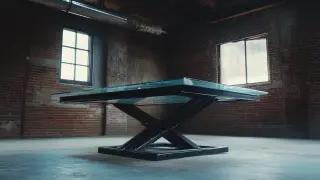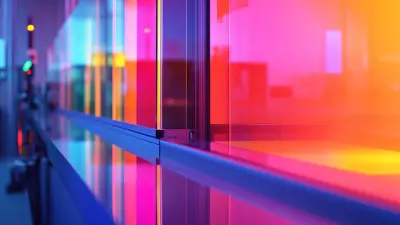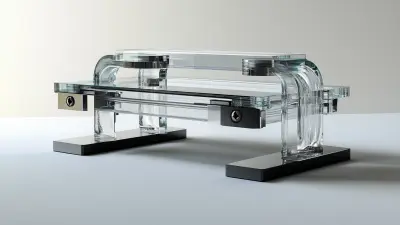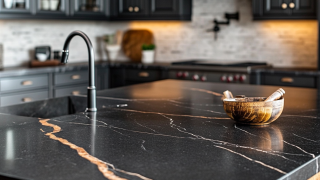You know, in today's manufacturing world, being efficient and precise is just everything. One of the biggest game-changers in how we handle glass processing is the Glass Edging Machine. These machines don't just make glass products look better; they’re super important for making sure everything is safe and durable, too. As industries push for high-quality finishes, the Glass Edging Machine really becomes a must-have for any manufacturer that wants to bring top-notch glass items to the table.
Since it started back in 2014, Shandong Eworld Machine Co., Ltd. has really made a name for itself as a leader in this field. They focus on creating all sorts of automatic glass machines, especially the popular Glass Edging Machines. They’re all about embracing technology and innovation, aiming to provide cutting-edge solutions that keep up with what the glass industry needs these days. If manufacturers want to step up their game and improve their efficiency and product quality in this competitive market, understanding the perks of Glass Edging Machines is definitely key.
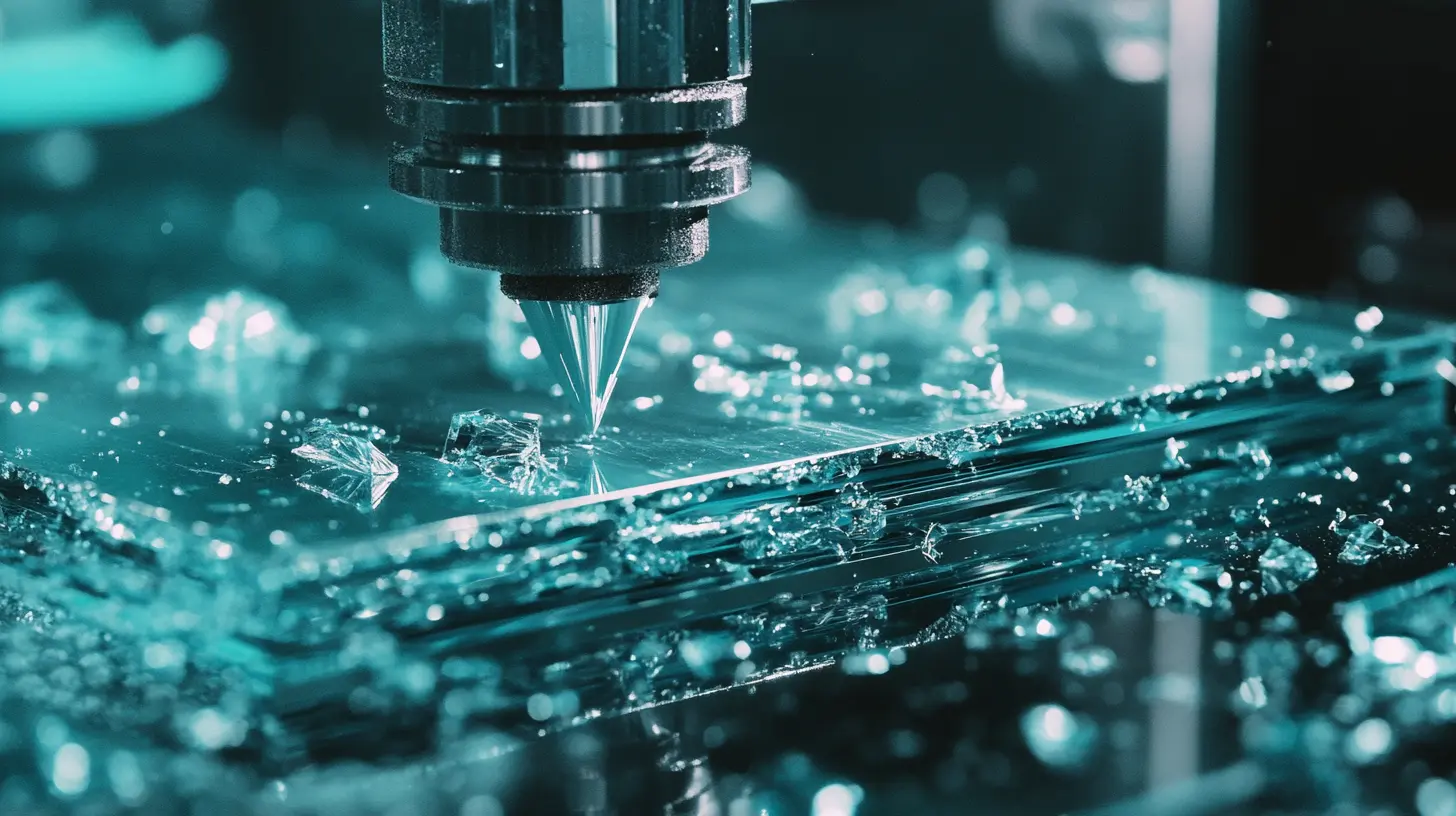
Advantages of Using Glass Edging Machines in Production Lines
You know, glass edging machines are really becoming a must-have in today’s production lines. They've got a bunch of perks that really help streamline the manufacturing process. As industries start leaning more toward those high-tech glass substrates—especially in fields like solar energy—the accuracy and efficiency of these machines are super crucial. They make sure the edges of glass components are nice and smooth, which means way less chipping and breakage. This is really essential for keeping glass intact in all sorts of applications. One big plus about using glass edging machines is that they can seriously cut down on labor costs and mistakes. With automation taking care of the edging, manufacturers can keep up a steady level of quality, which is a big deal in competitive markets like solar panel production. And with India kicking in a 10% customs duty on solar glass imports, fine-tuning production lines with effective glass processing equipment is more important than ever. Companies really need to stay agile and adapt to these shifting economic landscapes, and that’s where advanced glass edging solutions come into play, giving them the flexibility to meet new market demands. Plus, adding digital technology to glass processing really amps up what edging machines can do. By using customized machinery solutions, businesses can optimize their production lines, speed up turnaround times, and boost overall productivity. As manufacturers deal with the challenges of transitioning to new substrates, being able to implement cutting-edge edge finishing techniques definitely gives them an edge over the competition.

Key Features of Modern Glass Edging Machines
You know, modern glass edging machines are absolutely game-changers for boosting efficiency and precision in the glass manufacturing world. What really stands out about these machines is their amazing automation features. Thanks to computer numerical control (CNC) technology, operators can tackle those complex edging tasks with a level of accuracy that's just off the charts. This kind of precision means every piece of glass meets those all-important specs, which is crucial for producing high-quality products—whether we're talking architecture, automotive, or even interior design.
And let me tell you, another cool thing about these modern machines is their versatility. They're pretty much equipped to handle just about any shape or size of glass, whether it's your straightforward rounds or those fancy custom designs. This kind of flexibility not just ramps up production but also allows manufacturers to really meet the various needs of their customers. Plus, a lot of them come with adaptive speed controls and customizable settings, so the machines can tweak both the edging process and the cooling systems based on the specific properties of the glass.
Oh, and we can’t forget about energy efficiency! These contemporary glass edging machines are built to minimize power usage, thanks to improved motor designs and optimized operations. They really help cut down on those operational costs while still cranking out a lot of work. And as more industries push for eco-friendly methods, investing in these modern machines is definitely a smart move. With all these features, manufacturers are truly ready to handle the ever-changing needs of the glass industry.
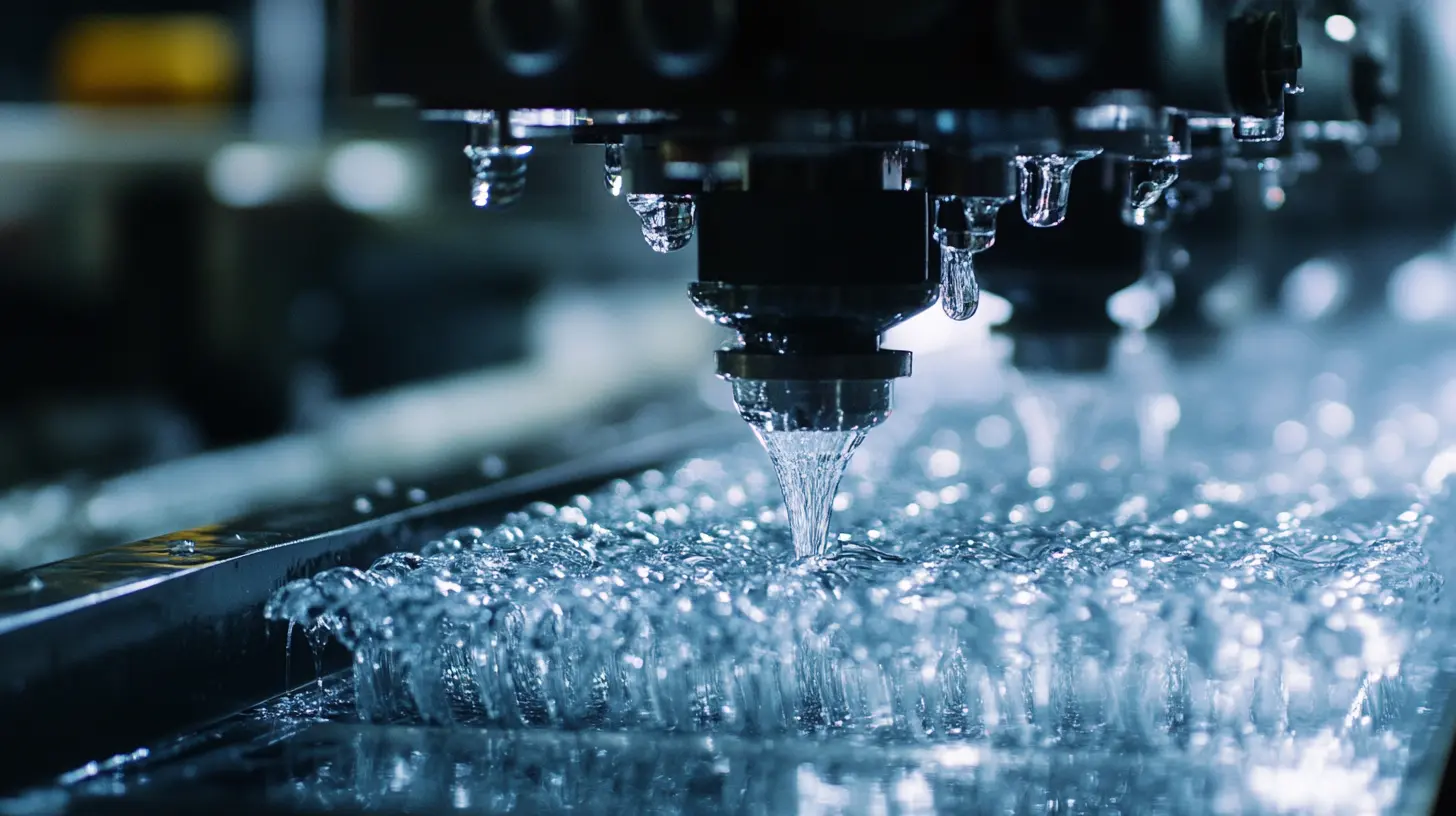
The Role of Automation in Glass Edging Processes
Automation is really starting to play a big role in how glass edging is done, especially as manufacturers look to boost their production efficiency and improve the quality of their products. Thanks to some cool tech advancements, automated glass edging machines can handle complex tasks with very little human help. Not only do these machines deliver super precise edges, but they also keep everything consistent across the board—something that’s become crucial in today’s competitive landscape.
Companies like Semcoglas are leading the charge, coming up with innovative solutions for automated glass quality inspection, like Softsolution's LineScanner. With this tech in play, they’re really raising the bar on quality control by automating the inspection process. This means better precision and efficiency all around. Plus, these automated systems are fantastic for gathering real-time data, which helps manufacturers make smarter decisions that can really affect production timelines and cost efficiency.
On top of that, the glass industry is seeing some pretty exciting changes thanks to the Internet of Things (IoT). Recent reports have pointed out that manufacturers are starting to go digital by adding sensors throughout their operations. This move allows for better process tracking and overall performance management, making sure companies can quickly adapt to market demands while keeping things lean and mean.
According to market reports, the glass tempering systems market is on the rise, with projections saying it could hit USD 121.6 billion by 2035, growing at a rate of about 4.5%. This growth really shows how the industry is embracing automation and smart tech to hit those quality and efficiency goals. As manufacturers keep pouring money into upgrading their processes, leveraging automated glass edging machines is going to be even more crucial for staying ahead of the game.

Comparing Traditional Methods and Glass Edging Machines
So, when we talk about glass processing, you know, traditional methods have really been the backbone of the industry for ages. Techniques like hand edging and manual polishing? They've helped a ton of craftsmen to craft these beautiful pieces, balancing precision with a dash of creativity. But here’s the catch: these old-school practices come with their fair share of challenges. We're talking about labor-intensive tasks, longer production times, and the level of skill required can be pretty daunting! Plus, depending on human expertise can lead to, let’s say, a bit of inconsistency, especially when you’re trying to crank out large quantities where uniformity is super important.
Now, on the flip side, we’ve got glass edging machines, which are a game-changer for modern manufacturing, right? By automating the edging process, these machines not only step up the efficiency but also nail precision—seriously, they make finishing the glass way faster. Unlike the traditional methods where little mistakes can happen just because of us being human, these machines churn out results that are spot-on every single time. They’re pretty versatile too, handling all sorts of glass thicknesses and shapes, which means manufacturers can quickly adapt to whatever the market throws their way.
So if we compare these two methods, it’s crystal clear that jumping on board with glass edging machines can really change the game for production workflows. For manufacturers who embrace this tech, it’s not just about working smarter, it’s also about kicking product quality up a notch, giving them a solid edge in what’s becoming an ever-more competitive marketplace. This whole move from traditional handwork to machine-driven processes shows just how much innovation shapes the glass industry today—it’s definitely exciting stuff!
Cost-Effectiveness of Implementing Glass Edging Technology
When you think about modern manufacturing, glass edging technology really shines as a crucial investment for companies that want to boost their efficiency and quality. You can really see how cost-effective these glass edging machines are, especially with all the production demands and budget headaches manufacturers face today. By automating the edging process, businesses can cut down on labor costs and reduce waste, creating a smoother operation that can keep up with those ever-changing market trends.
But there’s more to it! These machines don’t just help save money directly; they also improve the quality of the final product. With precision edging, you’re less likely to end up with defects, which is a total win since defects can lead to expensive rework and unhappy customers. In a competitive landscape, it’s super important to keep those high standards while also offering lower prices. Sure, the upfront investment in glass edging tech can seem steep, but it’s likely to lead to big savings in the long run, which puts companies in a great position to grab new opportunities while keeping their profit margins healthy.
Plus, one of the coolest things about glass edging technology is how scalable it is. As companies grow, these machines can easily ramp up to handle bigger production volumes without skyrocketing costs. That kind of flexibility means businesses can not only meet today’s demands but also gear up for future growth. Honestly, investing in glass edging machines is a smart financial move for any manufacturing strategy.
Enhancing Product Quality Through Precision Edge Finishing
You know, when you think about modern manufacturing, edge finishing really stands out as a key player in boosting product quality. Glass edging machines are super important in this whole process—they make sure every single piece of glass gets the precision and care it needs. It’s pretty amazing how this careful touch not only makes the final product look good but also helps it last longer and perform better. By getting those edges super smooth and just right, manufacturers can really cut down on the chances of breakage, which is especially important when glass is used in things like structural or functional roles.
Now, with all the cool technology coming into play, like edge computing, manufacturers are stepping up their game in quality control. Thanks to real-time insights and better process management, they can keep an eye on things and tweak production parameters as needed. This means they can reduce variability and ensure every piece meets, and even beats, those high expectations. Plus, by leveraging data analytics and predictive maintenance, businesses can catch potential issues before they actually become a problem, which makes the whole production process a lot smoother.
And let’s not forget about the trend of automation and AI in manufacturing—it’s really leading us towards even more precise edge finishing. As these automated systems get more advanced, they’re providing a level of consistency and accuracy that, let’s face it, manual methods can’t always match. This blend of cutting-edge technology with good old manufacturing methods signals a big shift towards prioritizing quality, where every little detail counts. So, nowadays, when we talk about enhanced edge finishing, it’s not just a matter of looks anymore; it really reflects a commitment to excellence that speaks to both manufacturers and consumers alike.
Impact of Glass Edging on Safety Standards in Manufacturing
You know, in today’s manufacturing world—especially for those dealing with glass products—safety has really taken center stage. And you can’t talk about safety without mentioning glass edging machines. These bad boys are a game changer. They’re built to smooth out and finish the edges of glass, which helps to get rid of those sharp edges that can cause accidents. By reducing the risks of cuts or other injuries while handling glass, these machines definitely help create a safer workspace for everyone involved.
But it’s not just about avoiding injuries. The precision that glass edging machines offer means that glass products come out looking uniform and consistent. This is super important because it directly ties into preventing accidents. You see, nicely edged glass isn’t just about looking good—it actually makes the glass stronger, too. That’s a big deal in fields like construction and automotive where they have to follow strict safety rules. By cutting down on the chances of breakage from poorly finished edges, companies can stick to the safety regulations better and, in turn, boost their reputation.
Plus, when companies start using these machines, it really helps build a safety-first culture at the workplace. When employees notice that their bosses are investing in tech that looks out for their well-being, it creates a sense of security and encourages everyone to stay vigilant about safety practices. So, really, using glass edging machines isn’t just about being efficient or making things look nice—it’s all about raising the bar for safety across the manufacturing scene.
Future Trends in Glass Edging Machine Technology
You know, the world of glass edging machines is really heating up with some amazing advancements lately. It’s pretty cool how more and more industries are leaning towards automation and efficiency these days. Because of that, there’s a big rise in demand for these high-tech glass edging machines. A report from Research and Markets even predicts that the global market for glass processing machinery is gonna balloon to about 6.5 billion dollars by 2027— and glass edging machines are really gonna be at the center of that growth. These machines are not just getting smarter; they’re coming with features like programmable controls and real-time monitoring systems that help manufacturers nail down higher precision and cut down on waste. How awesome is that?
One of the most exciting trends we’re seeing is the use of artificial intelligence (AI) and machine learning in glass edging tech. Seriously, these technologies are game changers! They allow for real-time data crunching and smart predictive maintenance, which means less downtime and more consistent product quality. According to a study by TechSci Research, embracing AI in manufacturing could boost operational efficiency by up to 30%! So as companies dive into these advancements, they’re not just looking at increasing productivity—they’re also gearing up to tackle the more sophisticated needs of the market.
And let’s not forget about sustainability! The push for greener manufacturing is really reshaping how glass edging machines are designed. Manufacturers are putting their focus on energy-efficient systems that cut down on energy use and lessen their environmental footprint. A report from Mordor Intelligence suggests that this shift to eco-friendly practices will spark innovations in machine design, resulting in equipment that not only performs better but is also kinder to our planet. All in all, as these trends keep evolving, the future of glass edging technology looks not just more efficient but also way more sustainable, which is something we can all get behind!
FAQS
Glass edging machines optimize the manufacturing process by ensuring smooth and precise edges, reducing the risk of chipping and breakage, lowering labor costs, and minimizing errors through automation.
Automation enhances production efficiency and product quality by allowing machines to perform intricate tasks with minimal human intervention, thus ensuring consistency across products.
Precision edge finishing improves the aesthetic appeal of glass products and significantly enhances their durability and performance, reducing the risks of breakage and enhancing safety.
Digitalization allows for tailored machinery solutions that optimize production lines, improve turnaround times, and increase overall productivity by implementing sophisticated edge finishing processes.
IoT facilitates better tracking of processes, overall performance management, and enables manufacturers to quickly adapt to market demands by incorporating sensors into their operations.
The glass tempering systems market is projected to reach USD 121.6 billion by 2035, with a CAGR of 4.5%, reflecting the industry's embrace of automation and smart technologies.
Edge computing provides real-time insights and enhanced process control, allowing manufacturers to monitor and adjust production parameters, thereby reducing variability and exceeding quality expectations.
Automation and AI lead to greater precision in edge finishing, delivering consistency and accuracy that manual processes often cannot achieve, which transforms production into a quality-centric approach.
Automated quality inspection systems elevate quality control standards by gathering real-time data, enhancing precision and efficiency, and enabling manufacturers to make informed decisions that positively impact production timelines.
With the customs duty on solar glass imports rising to 10%, manufacturers must optimize production lines with efficient glass processing machinery to remain competitive in a shifting economic environment.

Home
About Us
Products
UPVC PVC Window Machine
Aluminum Window Machine
Glass Cutting Machine
Glass Edging Machine
Insulating Glass Machine
Glass lifting machine
Glass Washing Machine
Glass Laminating Machine
Glass Sandblasting Machine
Glass Drilling Machine
CNC Glass Working Center
CNC Non-Metal Cutting Machine
The Other Glass Machinery
Application
Download
News
Contact Us




